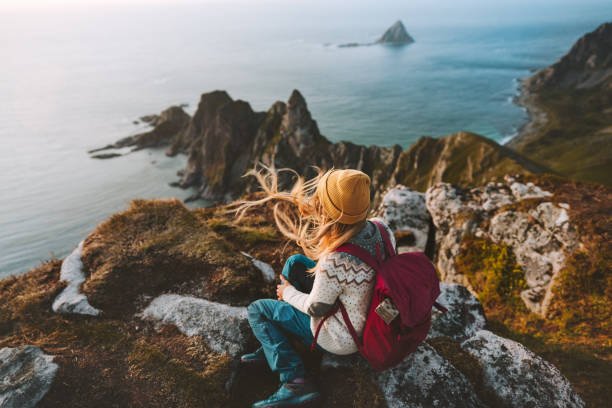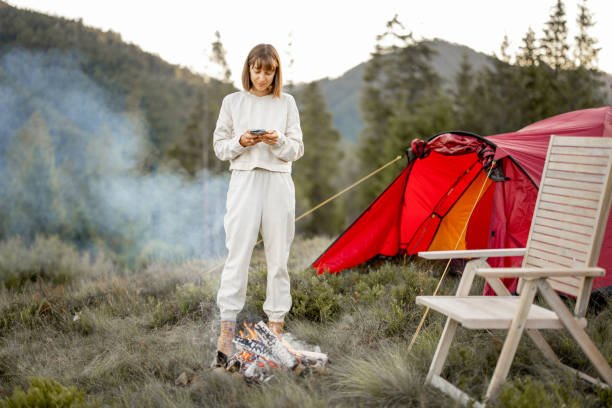Contents
- 1 Introduction to Solo Female Camping
- 1.1 Choosing the Right Destination
- 1.2 Essential Gear for Solo Female Camping
- 1.3 Packing Smart and Light
- 1.4 Setting Up Camp Safely
- 1.5 Share your planned location with family or friends.
- 1.6 Bring a satellite phone.
- 1.7 Don’t share your location online.
- 1.8 Safety Tips for Solo Female Campers
- 1.9 Avoid to encounter with wild animals
- 1.10 Enjoying the Experience
- 2 Conclusion
- 3 FAQs
Introduction to Solo Female Camping
Embarking on a solo camping trip as a woman is an empowering adventure filled with opportunities for self-discovery and connection with nature. While the idea of camping alone may seem daunting at first, it offers a unique sense of freedom and independence. Solo female camping allows you to immerse yourself fully in the wilderness, away from the hustle and bustle of everyday life, and to experience the beauty of nature on your own terms.
Solo female camping is not just about survival skills and outdoor expertise; it’s also about embracing solitude and discovering your inner strength. Whether you’re seeking a peaceful retreat to recharge your mind and body or craving a sense of adventure and exploration, solo camping provides a space for personal growth and reflection.

In this guide, we’ll delve into essential tips and strategies to help you navigate your first solo camping trip successfully. From choosing the right destination and packing essential gear to ensuring your safety and enjoying the experience, we’ll cover everything you need to know to embark on your solo camping adventure with confidence. So grab your gear, lace up your boots, and get ready to embark on a journey of self-discovery and adventure in the great outdoors.
Choosing the Right Destination
Safety Considerations
When selecting a camping destination, prioritize safety above all else. Opt for well-established campgrounds with a good reputation for security. Research the area thoroughly and consider factors such as wildlife presence, weather conditions, and accessibility.
Accessibility and Amenities
For your first solo camping trip, choose a destination that offers easy access to amenities such as restrooms, potable water, and emergency services if needed. This will provide an added layer of security and peace of mind during your adventure.

Essential Gear for Solo Female Camping
Shelter and Sleeping Gear
Invest in high-quality camping gear, including a reliable tent, sleeping bag, and sleeping pad. Ensure your shelter provides adequate protection from the elements and offers privacy.
Safety Tools and Navigation Equipment
Pack essential safety tools such as a first-aid kit, multipurpose knife, flashlight, and map or GPS device for navigation. Familiarize yourself with their usage before setting out on your trip.

Packing Smart and Light
Clothing Essentials
Pack versatile clothing suitable for various weather conditions, including layers for warmth and waterproof outerwear. Choose moisture-wicking fabrics that dry quickly and avoid cotton, which retains moisture.
Food and Water Supplies
Pack lightweight and non-perishable food items that are easy to prepare, such as freeze-dried meals, energy bars, and trail mix. Bring an ample supply of water or invest in a portable water filtration system for purifying natural water sources.

Setting Up Camp Safely
Choosing a Campsite
Select a campsite that is flat, dry, and away from hazards such as dead trees and rocky terrain. Avoid camping near bodies of water to minimize the risk of flooding and wildlife encounters.
Campsite Security Measures
Take precautions to secure your campsite against unwanted visitors, both human and animal. Store food and scented items in bear-proof containers or hung from a tree branch out of reach.
Share your planned location with family or friends.
Before setting off on your solo camping trip, it’s crucial to inform trusted family members or friends about your planned itinerary. This includes details such as the locations you intend to camp at and your expected return date. Sharing this information ensures that someone knows where you are and can raise the alarm if you fail to check in as scheduled. In the event of an emergency or if you encounter unexpected difficulties, having someone aware of your whereabouts can expedite rescue efforts and provide support.
Bring a satellite phone.
When venturing into remote or isolated areas for solo camping, it’s wise to carry a satellite phone as part of your emergency communication kit. Unlike traditional cell phones, which rely on terrestrial networks and may have limited coverage in wilderness areas, satellite phones operate by connecting directly to orbiting satellites. This allows for reliable communication even in regions with no cellular reception, ensuring you can reach out for help in case of emergencies such as injuries, equipment failures, or becoming lost.

Don’t share your location online.
In an era of social media and digital connectivity, it’s important to exercise caution when sharing personal information, especially regarding your whereabouts. Avoid posting your exact location or detailed travel plans on social media platforms or other online forums. Broadcasting this information publicly can compromise your safety by potentially attracting unwanted attention or informing others of your absence from home. Instead, wait until after your camping trip to share photos and anecdotes, preserving your privacy and security while enjoying your outdoor adventure.
Safety Tips for Solo Female Campers
Emergency Preparedness
Prepare for emergencies by informing a trusted friend or family member of your itinerary and expected return date. Carry a fully charged cell phone with emergency contacts programmed and consider investing in a personal locator beacon for remote trips.
Trusting Your Instincts
Listen to your intuition and trust your instincts when assessing unfamiliar situations or encountering strangers. If something feels off or unsafe, don’t hesitate to leave the area or seek help.
Avoid to encounter with wild animals
To minimize the risk of encountering wild animals while camping, ensure proper food storage away from sleeping areas, cook meals away from tents to prevent food odors, maintain a clean campsite by promptly disposing of food waste and trash, make noise while hiking to alert animals of your presence, respect wildlife by observing from a safe distance, and adhere to park regulations regarding food storage and interactions with wildlife.

Enjoying the Experience
Embracing Solitude
Embrace the solitude of solo camping as an opportunity for self-reflection and personal growth. Disconnect from technology and immerse yourself in the beauty of nature, allowing yourself to unwind and recharge.
Connecting with Nature
Take time to explore your surroundings and appreciate the natural beauty of the wilderness. Engage in activities such as hiking, wildlife watching, and stargazing to deepen your connection with the outdoors.
Conclusion
Embarking on your first solo camping trip as a woman can be a transformative experience filled with adventure and self-discovery. By following these tips and prioritizing safety, you can embark on your journey with confidence and enjoy the freedom of exploring the great outdoors on your terms.
FAQs
Is solo camping safe for women?
What should I do if I encounter wildlife while camping alone?
How can I stay warm while camping in cold weather?
What should I do if I get lost while hiking alone?
How can I protect myself from potential threats while camping alone?



Pingback: 12 Safety Tips for Solo Camping: Expert advice - TheWorldCamping
Pingback: Solo Camping Challenges| Tips to Overcome Challenges - The World Camping